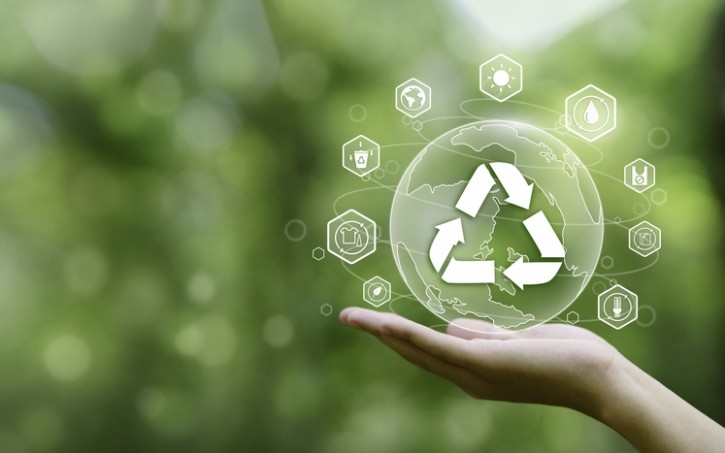Is compostable plastic really the green alternative we think it is?

The packaging industry markets bioplastic products as a solution to plastic pollution on the grounds they degrade faster in the environment, are made from safer materials, and have smaller climate change impacts than regular plastics, which are created from fossil fuels.
These claims tend to attract consumers and businesses looking for environmentally friendly alternatives to fossil fuel-based plastic.
But according to a new a report from Beyond Plastics, just because a product is “biobased,” “compostable,” or marketed as a “bioplastic” does not necessarily make it better.
“Many consumers and businesses are genuinely trying to do the right thing when they replace traditional plastic products — like utensils, takeout containers, and straws — with bioplastics that claim to be ‘biodegradable’ and ‘compostable,’ but unfortunately they’re often replacing one harmful material with another,” said Judith Enck, president of Beyond Plastics and former EPA regional administrator.
“The lack of regulations around bioplastics allows companies to present their products as more environmentally friendly than traditional plastic without meeting any standards for safety, toxicity, climate change impacts, or how long it takes for them to degrade.”
The group’s report says it combats the “often misleading” promotion of bioplastics by providing a close look at the benefits and harms of products on the market today.
The difference between biodedgradable and compostable
Biodegradable plastics are designed to break down into natural substances through the action of microorganisms like bacteria and fungi. However, the time it takes for them to decompose can vary greatly, potentially taking weeks, years, or even centuries.
These plastics can also leave behind microplastics or other residues that may not be environmentally friendly if not managed properly.
According to the Beyond Plastics report, some bioplastics may be even more toxic than traditional plastics because their product formulations contain new, unidentified chemicals.
Compostable plastics, meanwhile, have stricter requirements and are intended to break down completely in a composting environment without leaving harmful residue.
But no federal standards define or regulate bioplastic, biodegradable, or compostable products, the report said, which risks leading to misleading advertising and waste management challenges.
Compostable plastics can also only break apart in a commercial composting facility, and while the situation is improving few communities in the US have access to commercial composting facilities.
What are the recommendations of the report?
Instead of swapping out one type of plastic for another, the best option, according to the Beyond Plastic report, is to “turn off the spigot for single-use plastics, which make up nearly half of all plastics produced”.
The next best solutions are swapping plastic for a reusable or refillable system, or replacing plastic with a recycled paper or recycled cardboard product.
“Ultimately, individuals should always try to eliminate the need for plastic altogether or replace it with a reusable option,” said Enck. “But when a bioplastic product is the only material that fits the bill, this report should ensure individuals are making choices that better the planet and human health.”















